How the Media Obsession With Inflation Drives Discontent
As mainstream outlets continue to focus on inflation, consumer sentiment about the economy remains staggeringly low. Image: Adobe
Image: Adobe
2023 is over, and with it, the great inflation surge of the last few years has essentially come to an end. As the progressive economist Dean Baker trumpeted shortly before Christmas, “This Economy Has Landed, We Are at the Fed’s Target” (Beat the Press, 12/22/23). Inflation is now at 2.6%, according to the Federal Reserve’s preferred measure, and is trending further downward. Remarkably, since the Fed began raising interest rates in the spring of 2022, unemployment has maintained a historically low level of below 4%.
Contrast that with the US’s last experience with an extended period of elevated inflation. That was the double-digit inflation of the late 1970s/early 1980s, which the Fed fought by sending unemployment skyrocketing—from 6% in 1979 to a peak of nearly 11% in 1982. With inflation tamed in the fall of 1984—down to 4.3%—President Ronald Reagan declared “Morning in America.”
At the time, the misery index, a rough gauge of societal suffering that sums inflation and unemployment, clocked in at nearly 12%. Today, the same index sits around 7%. If the fall of 1984 was morning, we’re well into the day. The dark, turbulent night is not only behind us; it’s been over for a while.
Public not buying it
That’s not how most of the American public seems to feel, though. People continue to rate the economy stunningly poorly, given its performance of late. The University of Michigan’s Index of Consumer Sentiment, for instance, most recently registered 61.3, versus 100.9 during “Morning in America.” In other words, consumer sentiment is currently 39% lower than it was at a time when the misery index was 41% higher.
Meanwhile, Joe Biden has a lower approval rating than any president going back to Jimmy Carter at the equivalent stage of their presidencies (New York Times, 12/28/23). Biden is, in fact, 15 percentage points lower than Reagan, whose economy at the same period of his presidency was, in key respects, significantly worse—unemployment, for instance, was 8.3%.
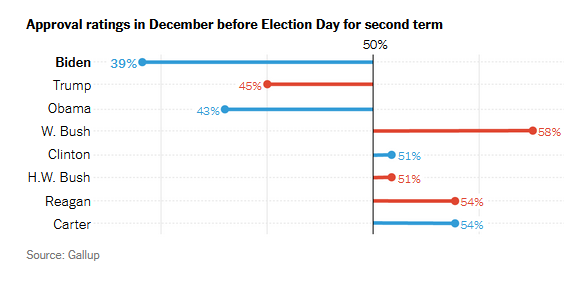
The gap between consumer sentiment and economic performance has sparked extensive pontification online, with a variety of reasons being proposed for the disconnect. Arguments have been made for everything from increases in grocery prices (Atlantic, 12/21/23), to real wage declines during much of 2021 and 2022 (Vox, 8/10/23), to social media misinformation (Washington Post, 11/24/23), to partisan polarization (CBS, 8/14/23), to lagging perceptions and a desire for outright deflation (Wall Street Journal, 10/18/23).
It’s also possible there’s been a shift towards general disillusionment with the economic system. In this view, consumer sentiment is now driven more by justifiable anger towards the system rather than disappointment with the real-time performance of macroeconomic variables like unemployment, inflation and GDP that tend to get discussed by the corporate press.
Inequality, after all, has steadily ticked up for decades, catapulting us into a new Gilded Age. The rising support for socialism among younger generations, as well as the salience of inequality in public discourse, could be carrying over into consumer sentiment, though this wouldn’t explain why sentiment is actually most positive among the 18–34 age group.
Inflation coverage in overdrive
At the end of the day, there’s probably some truth to all of these ideas. But there’s another fundamental cause of economic discontent that should be getting more attention: corporate media’s single-minded obsession with inflation, which has left the public with an objectively inaccurate view of the economy.
Back in 2019, when asked what metric they considered the most representative of the health of the overall economy, only 30% of Americans selected “the prices of goods and services you buy.” By the summer of 2023, that number had shot up to 57%.
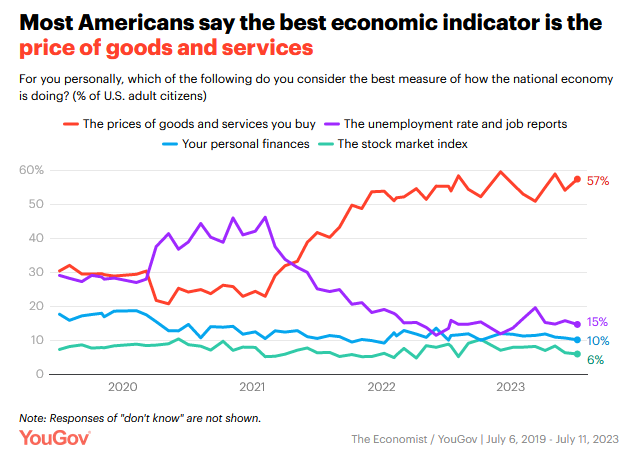
What changed? Well, obviously, inflation spiked. But not only that: Concurrently, media went into absolute overdrive in their coverage of the phenomenon. Over the course of Biden’s presidency, as I’ve previously documented for FAIR (7/13/23), cable news outlets have been noticeably more focused on inflation than on a host of recovery indicators, such as GDP, job growth and consumer spending.
Distracting from wage gains
One particularly frustrating example has been that of wage growth, which has gotten about 20 times less coverage than inflation across CNN, Fox and MSNBC since the start of 2022. This imbalance has shown up at print outlets as well, though in somewhat less pronounced form. A search of the New York Times archives returns six times as many results for “inflation” as for “wage growth” for the year 2023. At the Washington Post archives, the ratio is about 9 to 1.
This stark disparity between coverage of wage gains and coverage of price increases is, frankly, absurd. It’s critical to consider people’s income alongside prices, because your economic standing is not merely determined by what you’re charged in the market; it’s also affected by what you take home.
Let’s say you just lost your job, and now you face increased prices at the supermarket. That would be quite bad. But what if prices at the store increased, and your income increased by more? You would come out ahead.
This cheerier scenario has become the norm lately, despite inflation eroding wages for a period during the pandemic. Over 2023, as inflation declined, average real wages (that is, wages adjusted for inflation) climbed. Even zooming out to today vs. pre-pandemic, real wages have risen, though they probably aren’t as high as they would be absent Covid. Moreover, wages have actually remained on trend for production and nonsupervisory workers, who account for about 80% of the private workforce.
Contrast that with the cases of France, Germany, Italy and Britain, where real wages fell over the same period by an average of almost 5%. The US stands out here not for poor performance, but for remarkable resilience in the face of recent global economic shocks.
Portraying wage growth as a problem
These facts may come as a surprise to consumers of corporate media, not because this data is totally ignored in corporate news outlets, but because it gets so little attention relative to inflation. News of rising real wages certainly hasn’t gotten through to the average person, who remains convinced of an alternative set of facts about the economy. Recent polling, for instance, finds that just 10% of Americans recognize that wages have outpaced inflation over the past year.
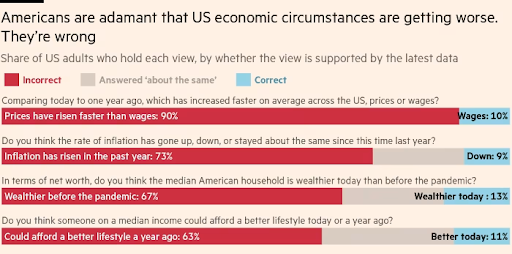
Likely part of the reason why the news about real wages hasn’t broken through is that media have frequently framed wage growth as a concern, rather than as a positive development that allows people to defend themselves from rising prices. As I’ve pointed out before (FAIR.org, 6/1/23), corporate outlets have repeatedly taken the stance that wage growth is bad, because it pushes up inflation:
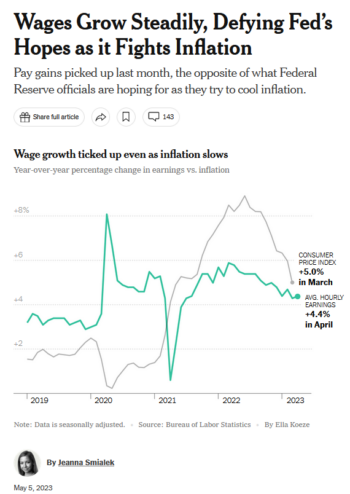
- “Cooler Hiring and Milder Pay Gains Could Aid Inflation Fight” (Associated Press, 1/6/23)
- “Wage Growth Has Slowed, but Still Pressures Services Inflation” (Wall Street Journal, 3/2/23)
- “Worker Pay Is Rising, Complicating the Fed’s Path” (Washington Post, 4/28/23)
- “Wages Grow Steadily, Defying Fed’s Hopes as It Fights Inflation” (New York Times, 5/5/23)
- “Pay Gains Are Slowing, Easing Worries on Inflation” (New York Times, 9/1/23)
- “US Wages Rose at a Solid Pace This Summer, Posing Challenge for Fed’s Inflation Fight” (Associated Press, 10/31/23)
- “Wages Boost US Labor Costs, House Price Inflation Picks Up” (Reuters, 10/31/23)
As corporate outlets churned out these headlines, the evidence was clear that wages were not driving inflation up in any significant way. Instead, elevated inflation was largely the result of the supply chain disruptions from the Covid pandemic and energy and food market disruptions from the Russian invasion of Ukraine.
The major wage growth–related concern, a wage-price spiral—where rapid price increases are matched by similarly rapid wage increases, eventually leading to an out-of-control upward spiral of each—simply did not materialize. All the fretting was for naught.
Negativity breeds negativity
This intense focus on inflation without commensurate analysis of income trends has left corporate media consumers ill-equipped to understand the real world. It has, however, left them well-equipped to overwhelm themselves with fear. According to researchers at the Federal Reserve Bank of San Francisco (11/14/22), media preoccupation with the negative noticeably deepened worries of a prolonged period of excess inflation:
Analyzing the volume and sentiment of daily news articles on inflation suggests that one-fourth of the increased gap between household and professional expectations [of future inflation] can be attributed to heightened negative media coverage.
Media alarmism also appears to have contributed to historically depressed consumer sentiment. A quick look at the Michigan Survey’s Index of Consumer Sentiment graphed against a measure of the negativity of news heard about recent changes in the economy reveals an obvious correlation between the two metrics:
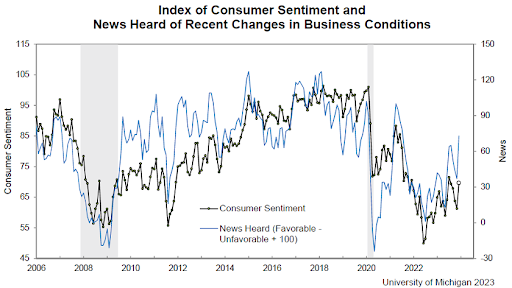
In summary, then: As corporate media hyper-fixated on inflation, the US public followed suit. As corporate media minimized discussion of wage gains, the American public rejected the idea that they had even occurred. As corporate media went negative, the public went even further south.
‘Morning in America’
Contrast this once again with what happened around the time of “Morning in America.” With Reagan approaching re-election, people reported hearing remarkably positive news about the economy. Despite a misery index reading of almost 12%, essentially unchanged from a year prior, the news consumers reported hearing regarding recent changes in the economy was net positive. Today, with the misery index most recently coming in at around 7%, about four points down from a year earlier, “news heard” is over 60 points net negative.
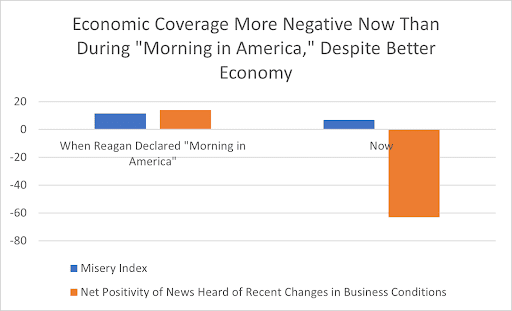
Amazingly, the most net positive that “news heard” has been on record was +52 points, which it reached in the summer of 1983 and again at the start of 1984. Unemployment during this period ranged from 8–10%. The silver lining could be found with inflation, which had, by July 1983, reached its lowest level in decades. This outcome, however, had come only after an uncompromising war on the working class.
Paul Volcker, who helmed the anti-inflation campaign as Fed chair from 1979 to 1987, reportedly considered “‘the most important single action of the [Reagan] administration in helping the anti-inflation fight’” to be “defeating the Professional Air Traffic Controllers Organization (PATCO) strike in 1981, when Reagan fired and permanently replaced 11,000 government workers and arrested their leaders.” Volcker, for his part, focused on jacking up unemployment to levels not seen since the early 1940s.
As this process began, eminent economists such as John Kenneth Galbraith and Robert Solow sharply dissented against the idea of using such methods. Solow went as far as to say:
To try effectively to wipe out hard‐core inflation by squeezing the economy is possible but disproportionately costly. It is burning down the house to roast the pig.
And to this day, the necessity of Volcker’s policies remains far from unquestioned. Dean Baker, for instance, has argued that inflation would have fallen regardless of whether Volcker raised interest rates, given the early 1980s drop in world oil prices—oil price spikes had been one major factor pushing up inflation in the 1970s.
But the media evidently loved Volcker’s approach, with historically positive “news heard” regarding the economy almost certainly giving Reagan a boost in the 1984 election, which he won in a landslide.
Just about a week before election day that year, the New York Times (10/28/84) captured the sentiment in the air (emphasis added):
There’s a new mood of confidence that leads some to assert that the world’s mightiest economy, though battered in spots, stands on the verge of returning to the halcyon days of an earlier postwar era when recoveries were strong and inflation mild and of little concern.
”There’s a change in perception around the world from the United States being a lousy place to do business to it being the best place in the world to invest,” says James F. Smith, chief economist for the Union Carbide Corporation. ”We are in a good position to replicate the glory years of the 1960s.”…
Much of the American business community is happy with the results. After-tax corporate profits are strong, capital investment is now the most important force behind the economic recovery and the rate of wage increase is the lowest it has been in decades.
How were workers feeling about their lower wage increases? They weren’t asked.
Who benefited?
Despite presiding over a fall in inflation with basically no jump in unemployment, Biden doesn’t seem likely to get the sort of bump Reagan received. That seems to have little to do with an objective assessment of the US economy, and more to do with who mainly benefited from Reagan’s and Biden’s policies.
Reagan lowered taxes on the rich, cut Social Security and crushed labor unions. Biden substantially (though temporarily) expanded the social safety net, driving poverty to its lowest level in US history (when accounting for stimulus payments and tax credits), and spurring a sizable reduction in wage inequality. As far as Biden is from an anti-establishment radical, media outlets owned by the wealthy seem much less prepared to grant him positive economic coverage than they were to shower Reagan’s economy with praise.
Your support is crucial…With an uncertain future and a new administration casting doubt on press freedoms, the danger is clear: The truth is at risk.
Now is the time to give. Your tax-deductible support allows us to dig deeper, delivering fearless investigative reporting and analysis that exposes what’s really happening — without compromise.
Stand with our courageous journalists. Donate today to protect a free press, uphold democracy and unearth untold stories.


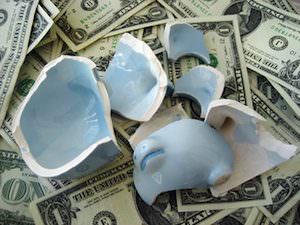
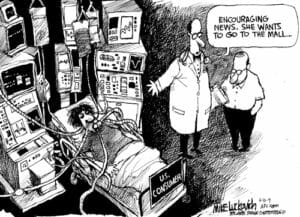
You need to be a supporter to comment.
There are currently no responses to this article.
Be the first to respond.